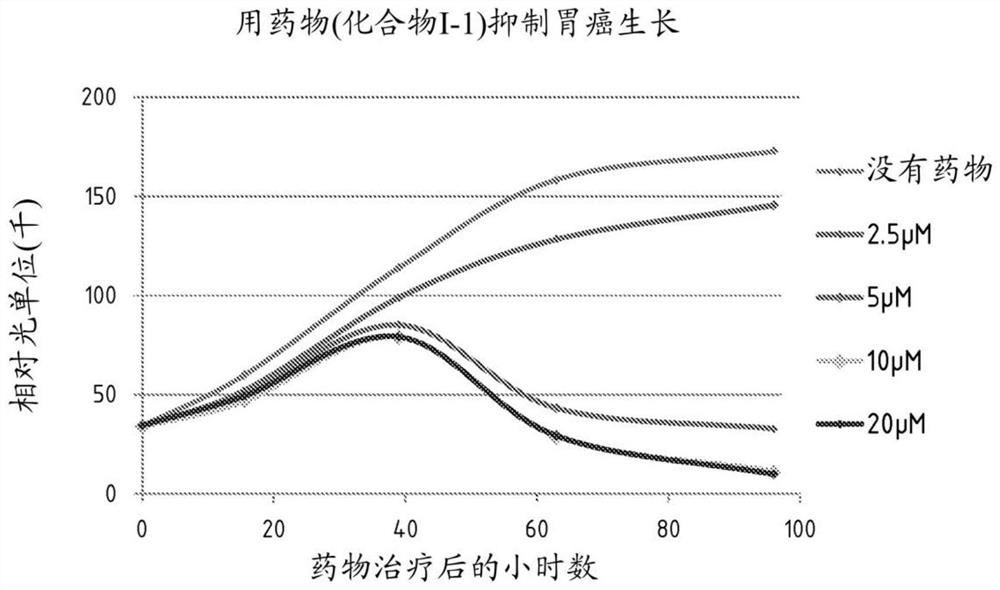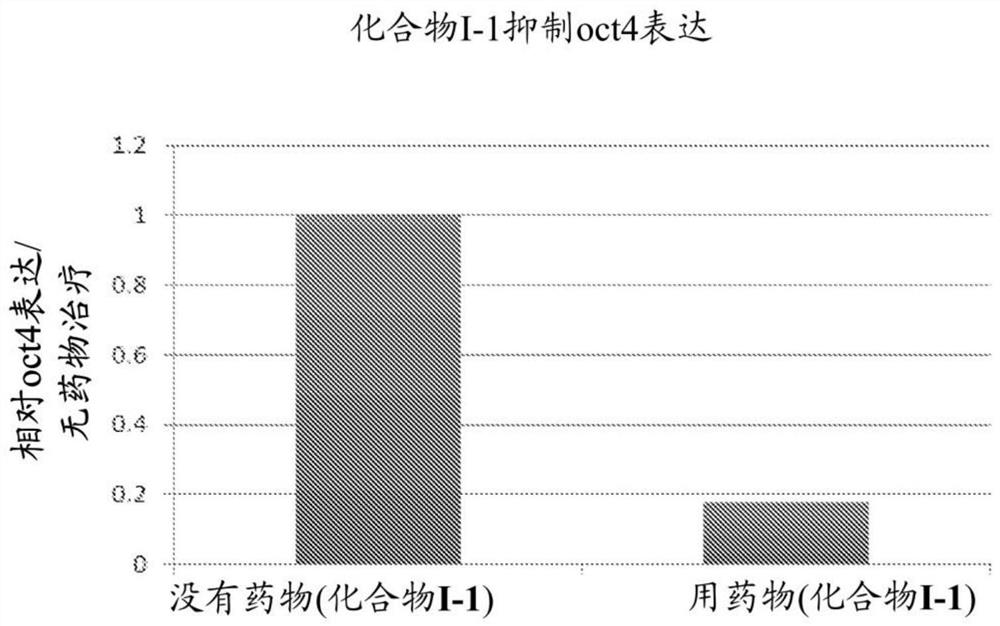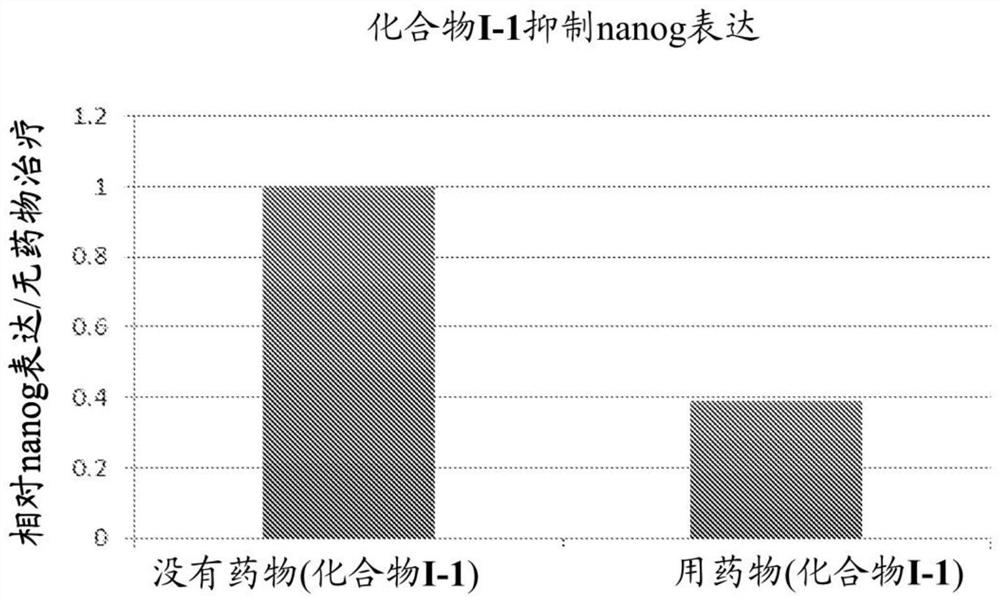Cancer treatments targeting cancer stem cells
A single ring, compound technology, applied in the direction of tumor/cancer cells, animal cells, vertebrate cells, etc., can solve the problem of drug-resistant tumor cancer spread and other problems
- Summary
- Abstract
- Description
- Claims
- Application Information
AI Technical Summary
Problems solved by technology
Method used
Image
Examples
Embodiment 1
[0782] Example 1. Kinetic cell viability of AGS cells
[0783]Approximately 50,000 AGS cells were seeded into each well of a 96-well plate in medium containing NanoLuc luciferase and the MT cell viability substrate provided in PROMEGA's RealTime Glo MT Cell Viability Assay Kit. Four hours after plating, cells were treated with DMSO alone (no drug treatment) or decreasing concentrations of compounds of the disclosure to achieve final concentrations of 20, 10, 5, and 2.5 μΜ. Luminescent units (RLU) were measured every 16-20 hours using a SynergyHTX plate reader with 30 msec integration (see figure 1 ).
Embodiment 2
[0784] Example 2. Human Microarray Studies
[0785] AGS human gastric adenocarcinoma cells were treated with compound 1-1 or DMSO alone (as a negative control) for two days. Two days later, RNA was isolated in duplicate from Compound 1-1-treated cells and DMSO-treated cells, and microarray analysis was performed using the AFFYMETRIX CLARIOM S microarray. Data are expressed as fold change relative to Compound I-1-treated cells, with negative values denoting genes that are higher in Compound I-1-treated cells than in DMSO-treated cells, while positive values denote genes that are higher in DMSO-treated cells Than higher genes in compound 1-1 treated cells. Values from replicate samples were averaged. Data were included for genes whose expression was changed more than 3-fold up or down in response to compound 1-1.
[0786] Table 1 shows the list of genes up-regulated after treatment of AGS human gastric cancer cell line with compound I-1 (shown below). Negative numbers ...
Embodiment 3
[0798] Example 3. Kinetic Cell Viability of AGS Cells
[0799] Compound 1-1 was tested for its ability to inhibit the growth of 12 additional cell lines derived from a variety of different types of human cancers. In addition to the effective inhibition of gastric adenocarcinoma and gastrointestinal stromal cell growth (gastric adenocarcinoma data shown in Example 1, gastrointestinal stromal tumor data shown in Table 3), compound I-1 also inhibited the growth of non-cholesterol Chickkin's lymphoma, small cell lung cancer, pancreatic cancer, gastrointestinal stromal and ovarian adenocarcinoma cells had the most potent effects. Exemplary results are shown in Table 3. IC 50 Values are listed, and the IC50 value is the lowest concentration of Compound 1-1 that results in 50% inhibition of cancer cell growth.
[0800] table 3.
[0801] cell line cancer type IC 50 (μM)
IGROV-1 ovarian adenocarcinoma 4.54 NCI-H69 Small Cell Lung Cancer 1.50 ...
PUM
 Login to View More
Login to View More Abstract
Description
Claims
Application Information
 Login to View More
Login to View More - R&D
- Intellectual Property
- Life Sciences
- Materials
- Tech Scout
- Unparalleled Data Quality
- Higher Quality Content
- 60% Fewer Hallucinations
Browse by: Latest US Patents, China's latest patents, Technical Efficacy Thesaurus, Application Domain, Technology Topic, Popular Technical Reports.
© 2025 PatSnap. All rights reserved.Legal|Privacy policy|Modern Slavery Act Transparency Statement|Sitemap|About US| Contact US: help@patsnap.com



